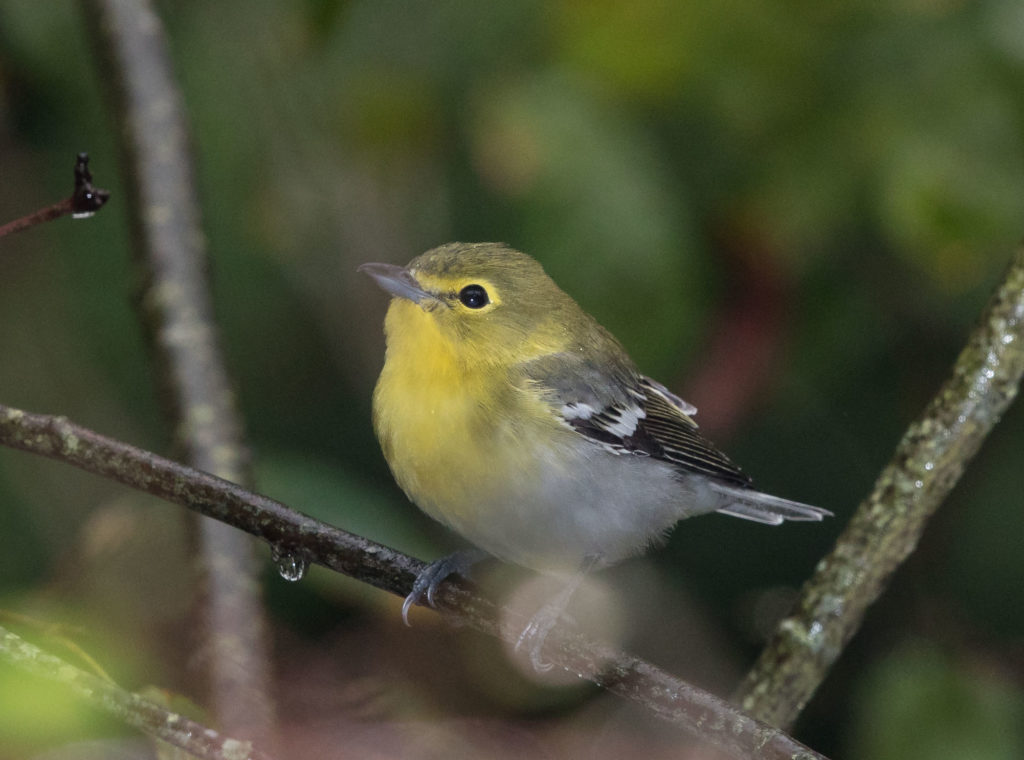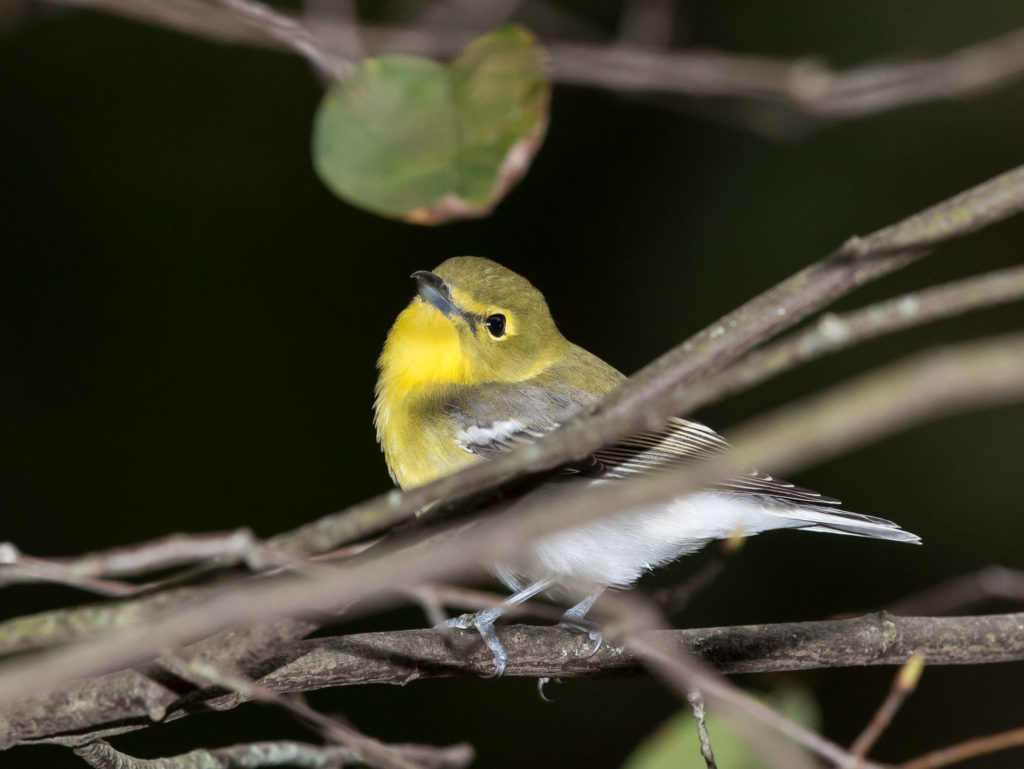Photographing a Yellow Throated Vireo
Lots of warblers coming through….. mostly drab coloring on the plumage. In most cases, I rarely get more than a glance. The camera’s lens is crucial to successfully examine colors and patterns. Without it, I certainly couldn’t ID most migrators with any conviction.
Based on this bird’s shape, size and elusive prowling behavior, I was pretty sure I had some kind of a warbler. Then I took a close look at the digital image…examining the size of her beak and her lemon yellow chest, throat and eye rings. Not a long, thin, pointy bill like a warbler, but thick; more like a Shrike with that large hook at the end. And what about those large bluish gray feet? Definitely not a warbler.

Circular Orbs Obstructing Left Foot.
ISO800; f/8; 1/250 Second
Stray Light
The sky was dark and pouring rain when this little Yellow Throated Vireo plopped down on a nearby branch in front of the camera. Small, drenched service berry leaves in front of and around the bird prevented the lens from getting a clean shot.
Somehow, on 3 sequential images, the camera recorded foggy looking circular overlapping orbs on the foreground of the bird’s left foot and all across the bottom of the image. This despite low ambient light, E-TTLII flash, lens hood attached, and advanced optical design multi-coating technology on my 500mm Canon L lens. OUCH!!
But Why?
- It was a dark day. There was no background source of ambient light equal or stronger than the existing light on the subject.
- The flash (with FEC set at -1/3) was doing most of the work.
- No pieces of dust, debris or water droplets were on the camera’s front or rear lens elements. (NOTE: Dust on the front of the lens hardly ever impacts image quality.)
It looks like overexposed lens flare, possibly combined with an out-of-focus elliptical Serviceberry leaf in the foreground. I can only surmise that those wet leaves in front of the bird bounced the light back toward the lens, causing not only lens flare, but also spotty reduction in saturation and contrast. (NOTE: Long lenses are more likely to produce pronounced lens flare.)

Thick Branches Obstructing Line of Sight,
But No Lens Flare.
ISO800; f/8; 1/250 Second
Unpredictable Lens Flare
Flare doesn’t require sun, just a light source. The light’s angle must have been just right to pass through multiple lens elements (and ultimately reach the sensor) and blast the images with little orbs. It all disappeared when the bird moved to a higher branch. I countered by moving the lens up, thus altering the angle of light. (See second photo.)
Flare and glare are unpredictable (for the most part) and can show up on digital images even when photographing on a dark day. In bird photography, I find these artifacts to be unattractive and distracting- an operator error which can be remedied if you notice it soon enough…. and the bird sticks around.








